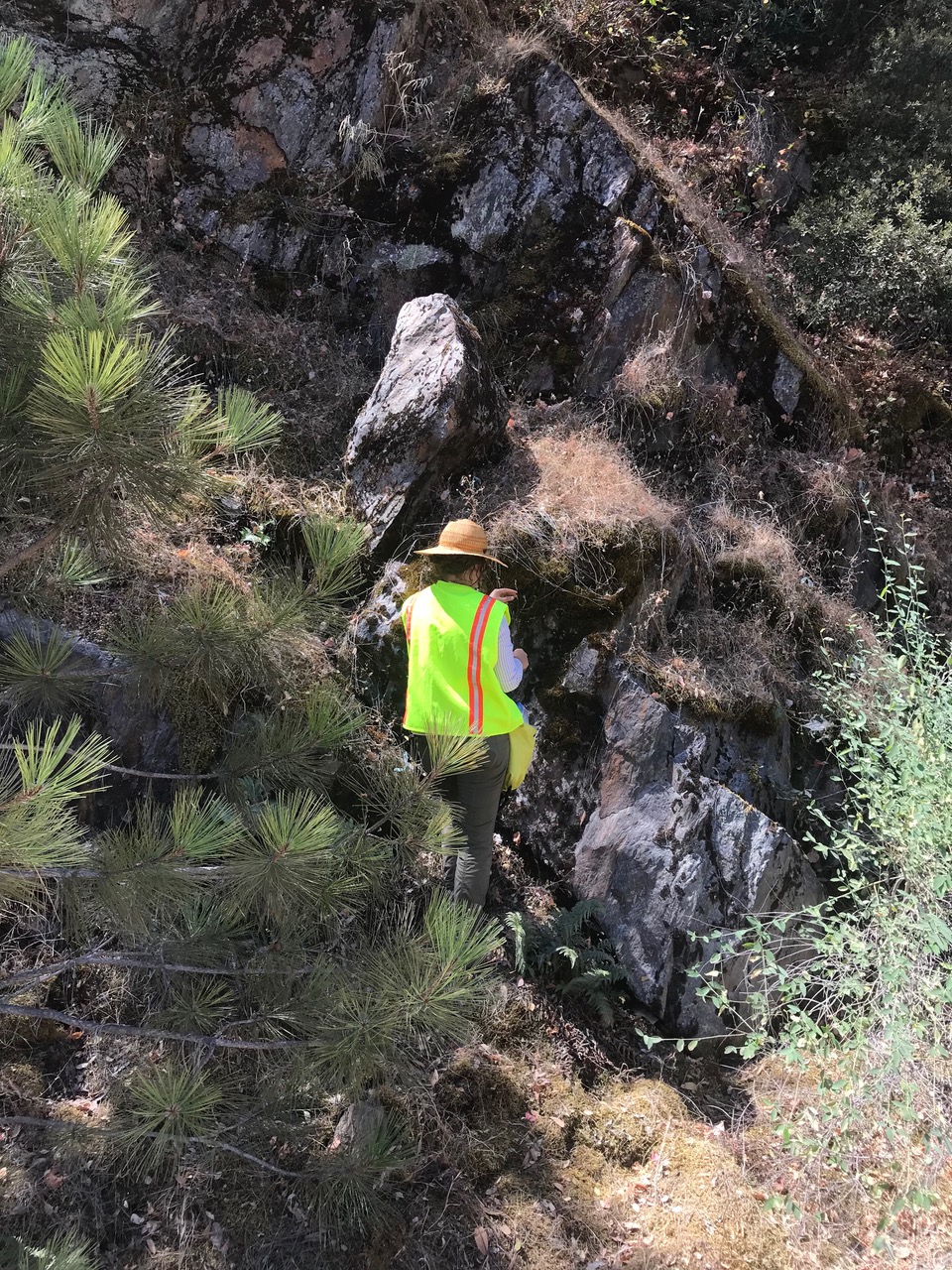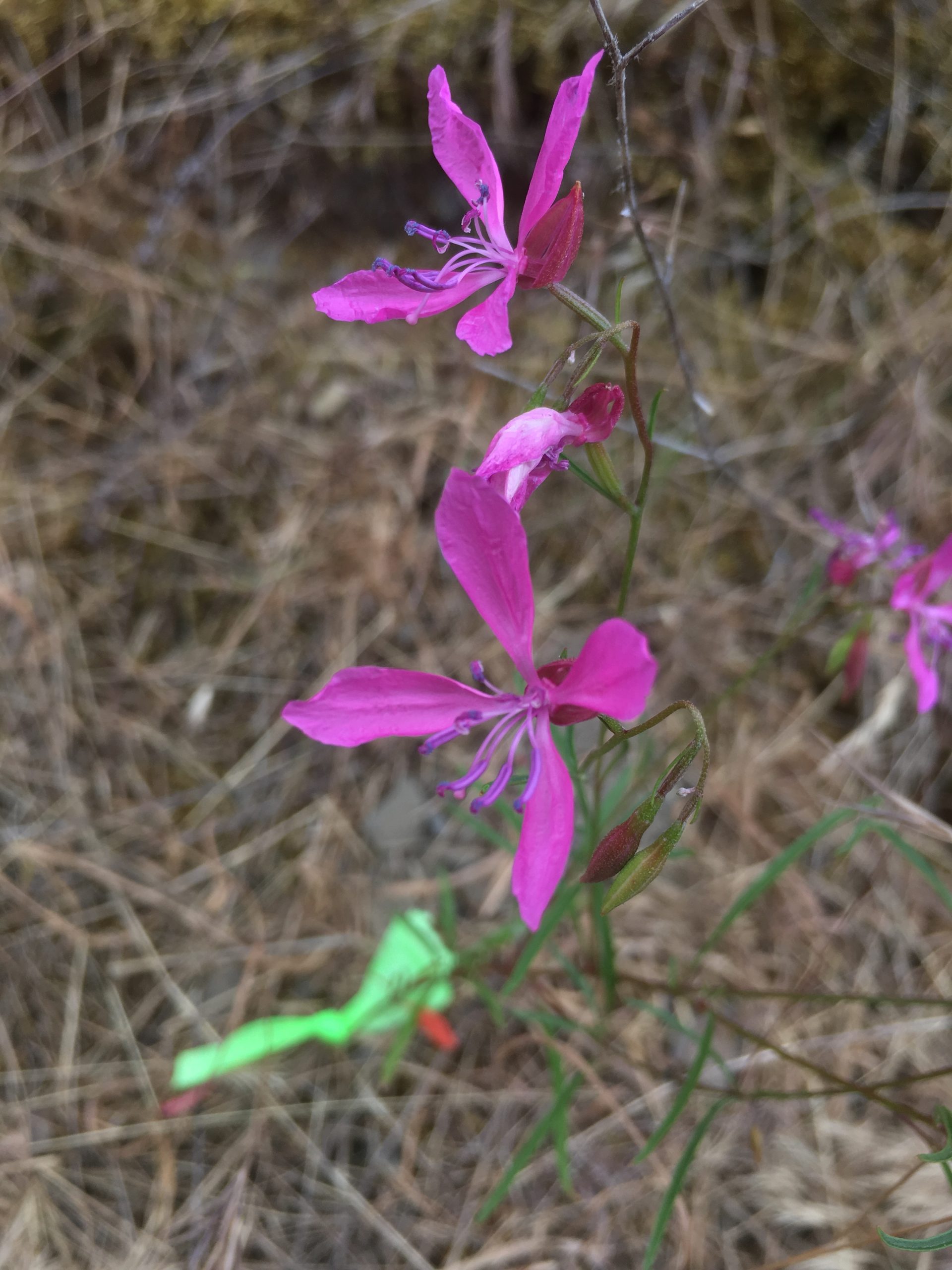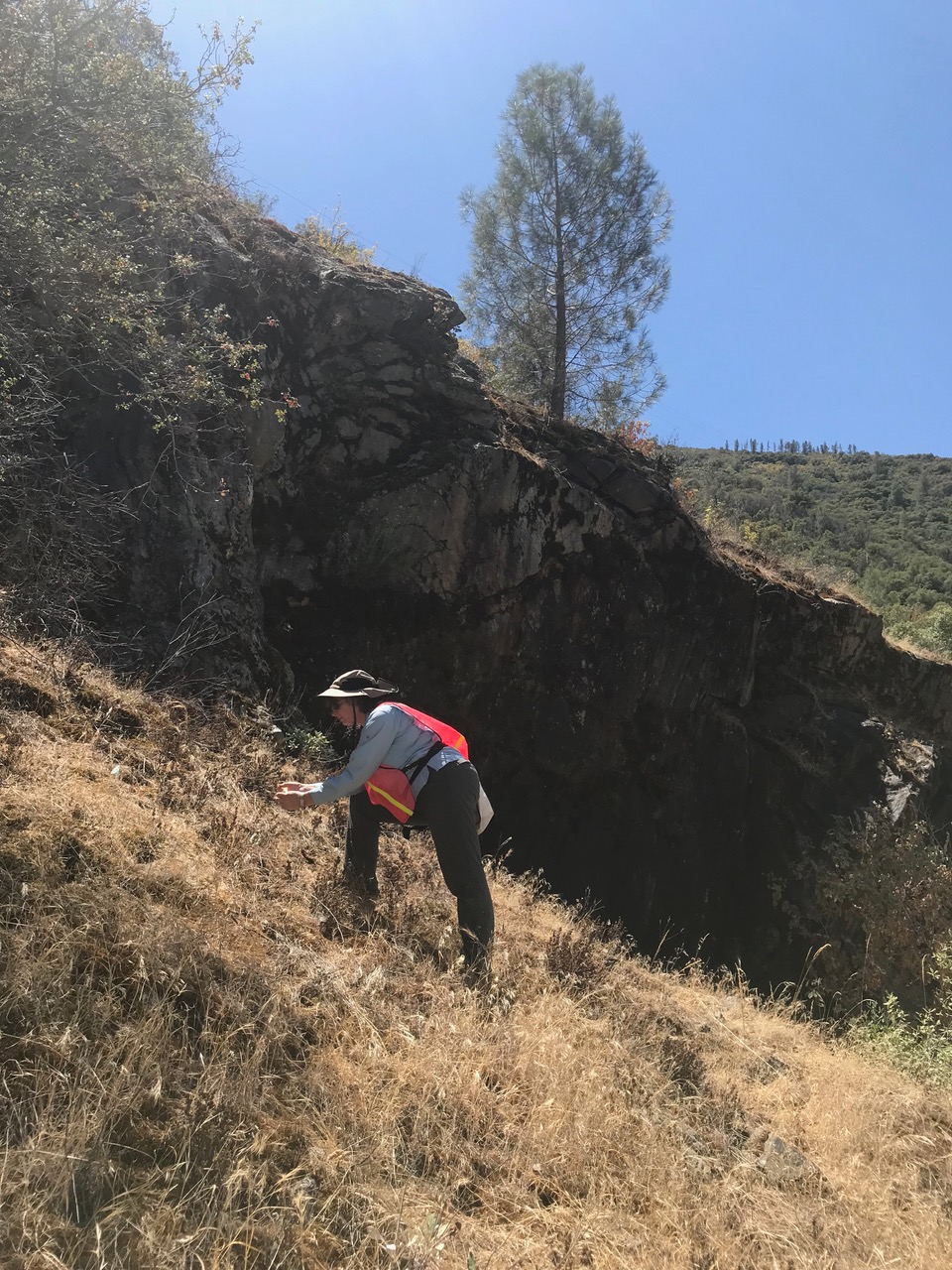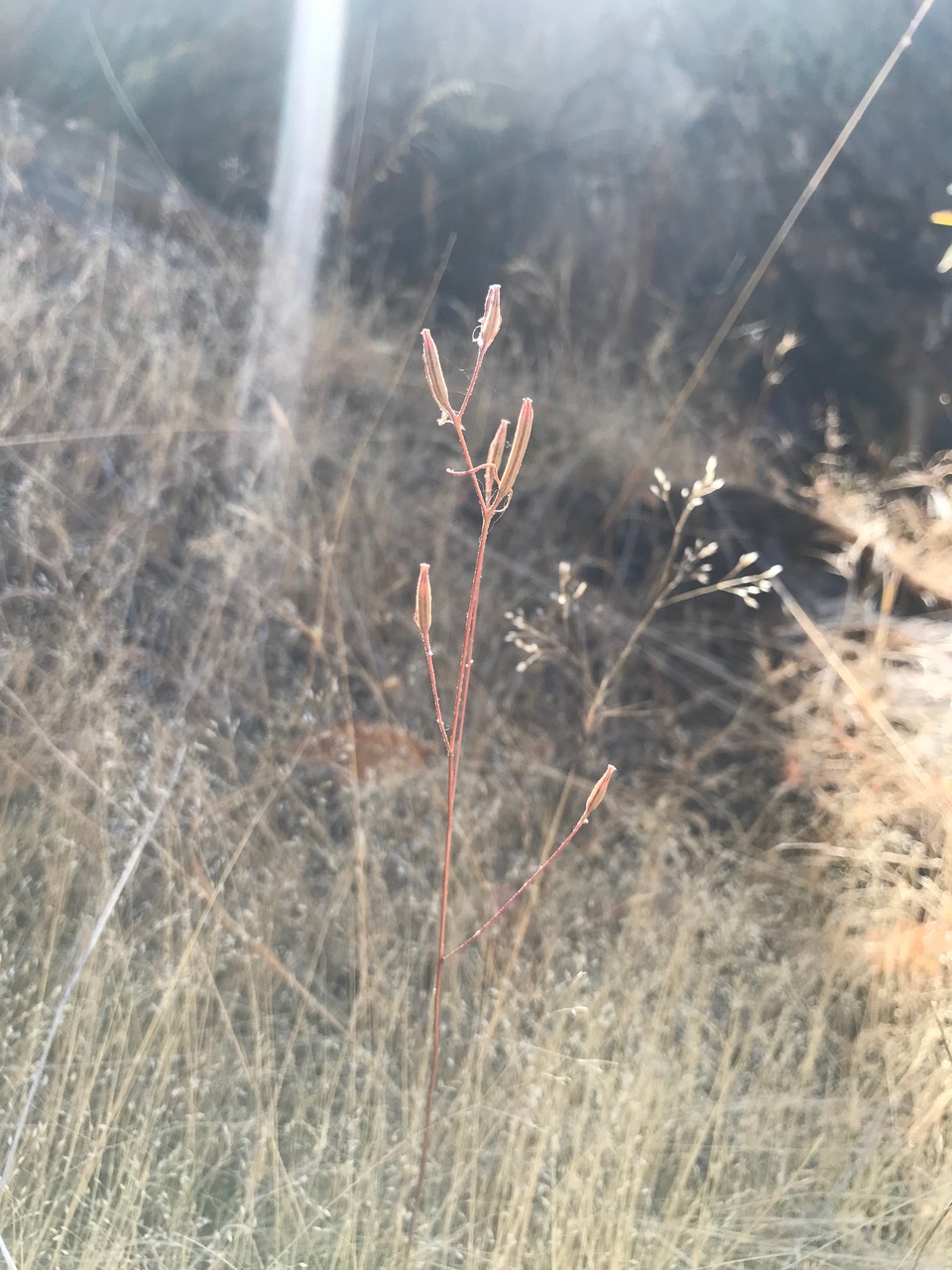Timing is Everything
On July 11th this year, three staff from UC Botanical Garden at Berkeley pulled to the side of Highway 140 near Savage Trading Post, a historical marker west of Yosemite Valley. Holly Forbes (Curator), Vanessa Handley (Director of Collections and Research), and Clare Loughran (Assistant Curator) had been in the car for some four hours and were eager to get to work collecting seed from the rare Merced clarkia (Clarkia lingulata). Forest Service botanist Joanna Clines graciously provided permission and detailed information about the populations.
Just three days later, several firefighting rigs would pull into the same spot at Savage Trading Post as CalFire used the space to stage firefighting efforts for what became known as the Ferguson Fire. The fire erupted on the night of Friday, July 13th, and wasn’t fully contained by firefighters until over a month and 96,901 acres later. The effects of the fire necessitated the closure of Yosemite National Park from August 3 -14. Two firefighters lost their lives, 19 people were injured, and 10 structures were destroyed. The perimeter of the fire grew quickly well past the Trading Post and the clarkia, but it is still unknown if the only two populations of this species, both precariously located on the margins of Highway 140, were impacted by the flames or firefighting efforts.
The team had great timing, and not just in terms of the fire. They arrived to collect when seed was ripe and ready, with only a few of the plants having already dispersed their seed. While in bloom from May to June, the clarkia’s bright pink petals make it stand out. However, they are decidedly less dramatic when seed-laden; dried out annuals are difficult to discern from its parental species, Mariposa clarkia (Clarkia biloba), which also occurs in the area (a rare example of sympatric speciation!). So, six weeks earlier, UCBG staff had been joined by three US Fish and Wildlife Service (USFWS) staff from the Sacramento office to flag 170 individual plants in each of the two populations, making sure that even in their undramatic state they could be found. Between flagging and collection times, Dr. Alison Colwell, Assistant Rare Plant Botanist for the California Native Plant Society, checked in on the populations from time to time to see how the seed was maturing. She let the UCBG team know when the time for collection had come.




Their previous preparations helped the UCBG make quick work of the two populations, collecting seed from 122 individuals of one and 164 of the other in just a few hours before the long drive back to Berkeley. Quick does not mean easy. The collection was hazardous, collecting on a rocky roadside where car debris from recent accidents and rockslides are a semi-regular occurrence. The steep, rocky habitat made it difficult to collect evenly across the population. But they got what they could, and plan to bulk the seed in their nursery soon.
The two populations are separated at this time by a massive rock slide that closed Highway 140 for weeks, and necessitated the building of a single lane road on the opposite side of the Merced River and the erection of two one-lane bridges to bypass the destroyed road.
When Holly initially heard about the fire, she immediately thought of the clarkia – the uncollected seed of many still waving in the air, attached to the dry remains of the annual plants. Though the population should weather the fire well, the opportunity to collect would have been lost had the team not collected when they did – the road was closed for weeks after the collection and seed would have dispersed. It’s strange to think of a fire raging through an area you had just been walking through, of fire trucks and a swarm of firefighters occupying the space you had just been. But, for Holly, it was also a relief to know they had already secured seeds of the Merced clarkia.
Merced clarkia is just one of six clarkia species getting help from UCBG with their current USFWS project (coordinated by Valary Bloom and Josh Hull, USFWS Sacramento Office). The USFWS is funding their effort to conserve and increase the seed of clarkia species that are, as yet, not on the federal endangered species list, but are declining. Merced clarkia is threatened by big catastrophic events like fire and landslides, as well as poor road-side management – having been hit hard by roadside herbicide treatment a couple of decades ago. Other species are also susceptible to similar random events and other threats. All the targeted clarkias are to be maintained in conservation seed collections, along maternal lines (per CPC’s standards), and bulked to ensure there is enough seed to use when needed.
Having seed ready when it’s needed is, after all, what it’s all about. The Ferguson Fire is a good reminder of the importance of making conservation collections as soon as you can to make sure seed is obtained. Timing a seed collection can be difficult in general, but you never know when your target population may become inaccessible or even destroyed by any number of possible events.